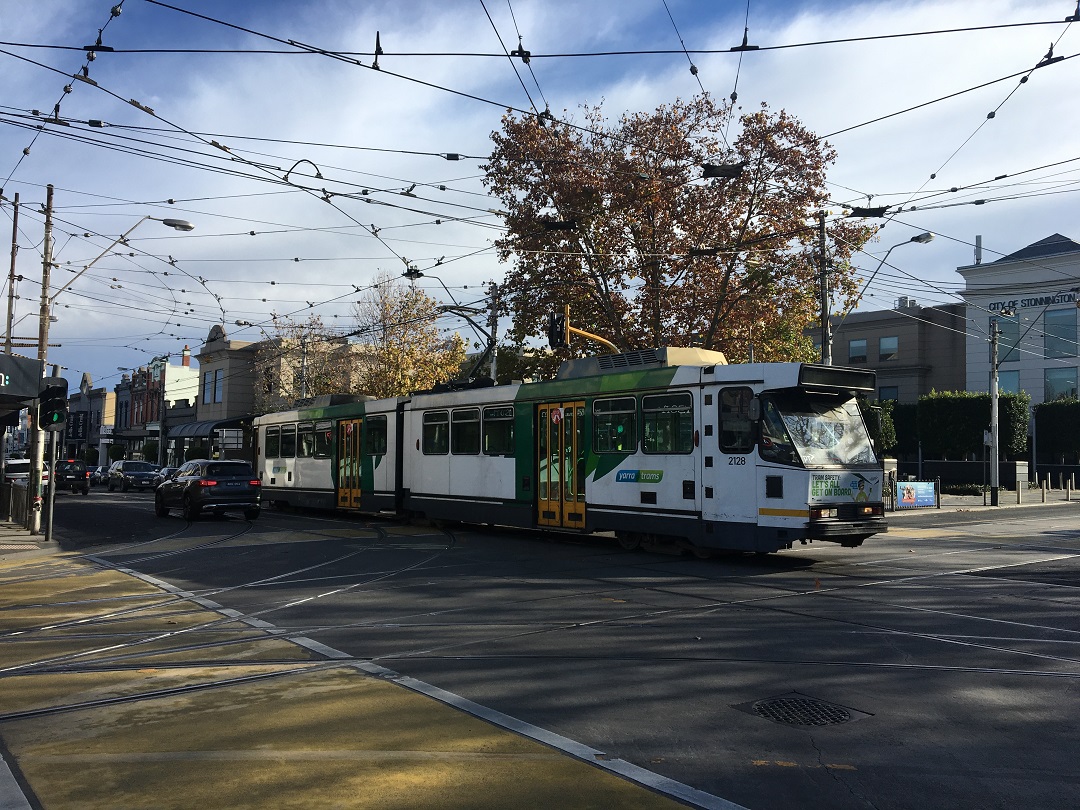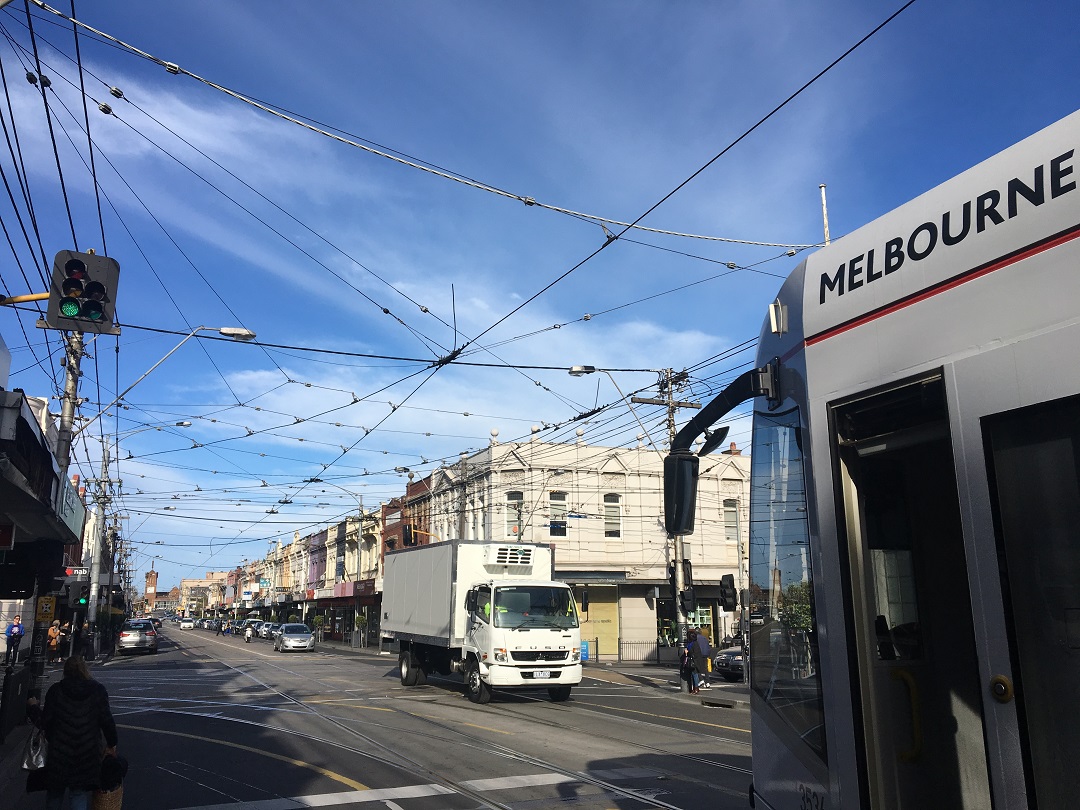
Flies to the urban spiderweb—we’re doing away with overhead tram lines.
Trams are as Melbourne as the MCG and an obsession with coffee. But while Melbourne has the world’s largest tram network (250 km), other Australian cities like Sydney and Newcastle are rekindling their love affair with light rail.
Until recently it’s come at a cost, the thick “spiderweb” of overhead cables needed to keep electrified light rail on the move. They’re ugly, costly to maintain and require their own complex network of infrastructure and sub-stations.
Now though, there’s a new kid on the block that could do away with overhead power lines and move everything safely onboard the tram. Supercapacitors are milk carton size devices that can store large amounts of energy, release it in fast bursts, and then recharge rapidly. It means a tram could arrive at a stop, be charged up with megawatts of power in a minute, then continue on its way. All without the need for overhead power lines.
We’re working on a range of supercapacitor projects with the Australian Government’s Rail Manufacturing Cooperative Research Centre and the China Railway Rolling Stock Corporation (CRRC).
CRRC is renowned for building the world’s first supercapacitor-powered light rail. Now we’re working with them to develop an improved energy management system to make the technology commercially viable. That has involved updating cell balancing, charge and discharge profiles, and communications between the on-board system and the supercapacitors.

Talk about grid-lock—Melbourne’s overhead power lines.
A new prototype, developed in Sydney, has already been sent to China for testing.
Getting rid of overhead power lines would mean the sky’s the limit for light rail. It opens the way for more design flexibility and taller trams that can carry vastly more people. All while greatly reducing construction and maintenance costs. Regenerative braking could also be used to harness the kinetic energy of slowing a tram and turn it into a sustainable power source to get it moving again.
Australia’s rail supply industry employs more than 15,000 people in the manufacturing sector, in businesses ranging from small enterprises through to large multinationals. By cooperating with global partners like CRRC we’re developing new technology that allow the industry to improve its capability and international competitiveness.
And given Australia’s new fondness for light rail, our technology could soon be coming to a street – but not sky – near you!
Did you know:
- Melbourne’s trams travel far enough a year combined to make 32 return trips to the moon.
- Before it closed in 1961, Sydney’s tram network was Australia’s most extensive (291 km) and remains the nation’s largest ever public transport carrier, moving 400 million people a year.
- Broken Hill once had a tram line. It transported passengers and silver ore to and from the South Australian border.
- Newcastle will have Australia’s first “wireless” light rail system. It’s scheduled to be completed in 2019.
Find this energising?
We’ve got plenty of bright sparks working on next generation electronics.


19th March 2022 at 8:41 am
Just curious why the prototype had to be sent to China for testing?
22nd March 2022 at 12:40 pm
Hi Maxine, thanks for your comment. The project was originally in partnership with the CRRC Qingdao Sifang Rolling Stock Research Institute, and the technology was developed with them with the support of the Rail Manufacturing CRC. The CRRC was examining the adoption of the technology at the time.
Thanks,
Team CSIRO
19th July 2021 at 8:52 pm
How does this compare with the technology coming from estonia/Germany?
https://www.skeletontech.com/catenary-free-operation
Have we included this tech in our rail network yet ?
Cheers
13th June 2020 at 11:42 am
Good news about eliminating the overhead wires for light rail. But what about also eliminating the rails? Supercapacitor powered electric busses would allow variable routing and passing for a more flexible and responsive transport system. Is there a problem with the greater rolling friction of rubber tyres than steel rails? I doubt it.
15th January 2020 at 9:10 pm
As an electronics tech of many decades I would like the information presented here to be more technical, as stated before by another individual it’s not the low intellect or lay people with no prior electrical knowledge who would be searching for this information anyway.
Robert Scott
23rd December 2019 at 3:00 pm
I’ve seen the Newcastle system and it’s working but it’s only 6km or so.
There is also another inititive where trams have hard rubber tyres and can be guided within a millimetre along lines painted on the road instead of tracks threough designated stops.
So it’s not a bus, the rubber wheels are kept in a bogie and have the same restrictions as rail.but the driver can swerve it if he needs to.
And it also runs on a battery capacitor system except there are no return rails and so would need to have two contactors on the roof.
But we could have a road-tram in any suburb without having to build tracks or an overhead wire.